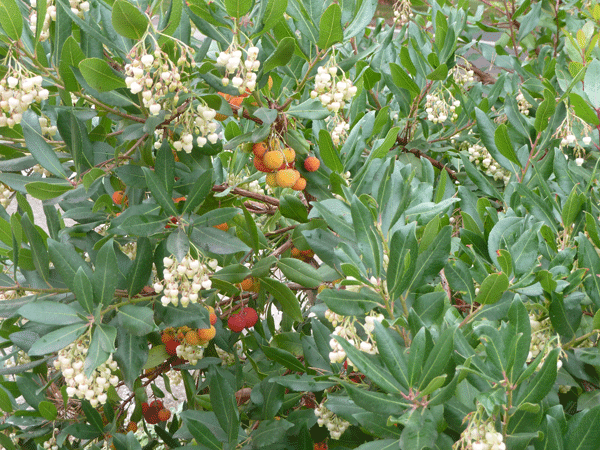 Here is a plant that may just solve multiple problems for you in your landscape: Strawberry Tree. In short, it’s evergreen, produces edible fruits, fruits off-season when not much else is producing and is drought-tolerant.
Here is a plant that may just solve multiple problems for you in your landscape: Strawberry Tree. In short, it’s evergreen, produces edible fruits, fruits off-season when not much else is producing and is drought-tolerant.
Strawberry Tree, Arbutus unedo, is native to the Mediterranean, but becoming more common as an ornamental in the US. Look a little closer and you will see odd-looking red, edible fruits hanging off the branches. I see this unusual edible all over town and have been enjoying it as a snack to and from class. The better tasting fruit has a hint of strawberry-like flavor.
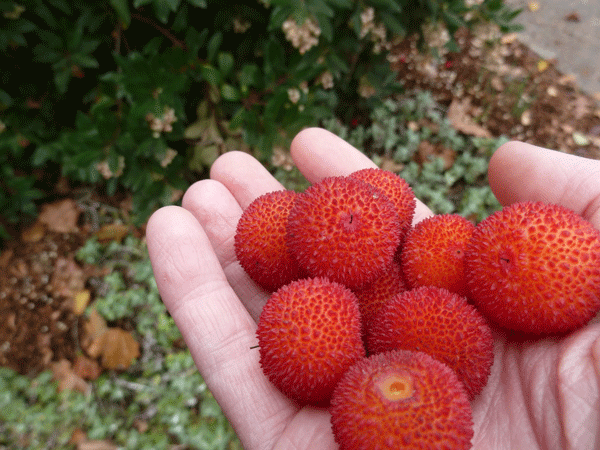 It is a broad-leafed evergreen, meaning it has wider leaves and not needles, with red bark. Use it to cover up an unsightly view, like a utility box, plant it as an evergreen hedge to make a divided, or plant it a place where you can enjoy the greenery year round. The one on our homestead is planted outside the bathroom, giving us a little more privacy.
It is a broad-leafed evergreen, meaning it has wider leaves and not needles, with red bark. Use it to cover up an unsightly view, like a utility box, plant it as an evergreen hedge to make a divided, or plant it a place where you can enjoy the greenery year round. The one on our homestead is planted outside the bathroom, giving us a little more privacy.
Strawberry Tree typically produces small, white, urn-shaped flowers in mid-fall (Sept-Oct) and fruits around late-fall (Nov-Dec). As shown above, often it will fruit and flower at the same time over several months. The plant will grow to about 8-10 feet over the course of ten years or so. It is relatively slow-growing, so it could grow up to 15-20 but that would take about 20+ years. It is a drought-tolerant plant once established, another great feature of this shrub. It can also tolerate a range of soil types and will do best in zones 7-9.
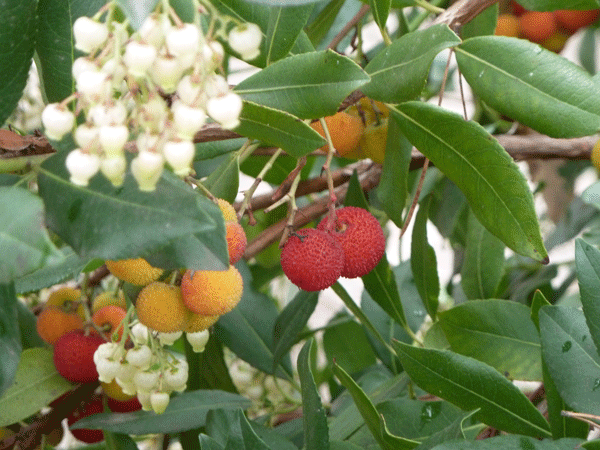 My advice is to buy Strawberry Tree from a nursery that specializes in edibles. They are most likely selecting for better tasting fruit. I have snacked on some that taste like nothing and others that have that great strawberry-like flavor. Our shrub at home is growing in relatively poor soil, in full sun, and has been doing great. I’m planning to get more this winter actually to tuck into bare spots along the fence where we need more evergreen structure.
My advice is to buy Strawberry Tree from a nursery that specializes in edibles. They are most likely selecting for better tasting fruit. I have snacked on some that taste like nothing and others that have that great strawberry-like flavor. Our shrub at home is growing in relatively poor soil, in full sun, and has been doing great. I’m planning to get more this winter actually to tuck into bare spots along the fence where we need more evergreen structure.
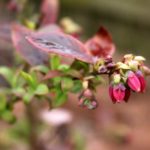
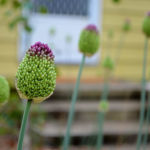
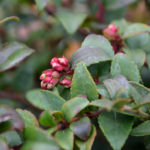

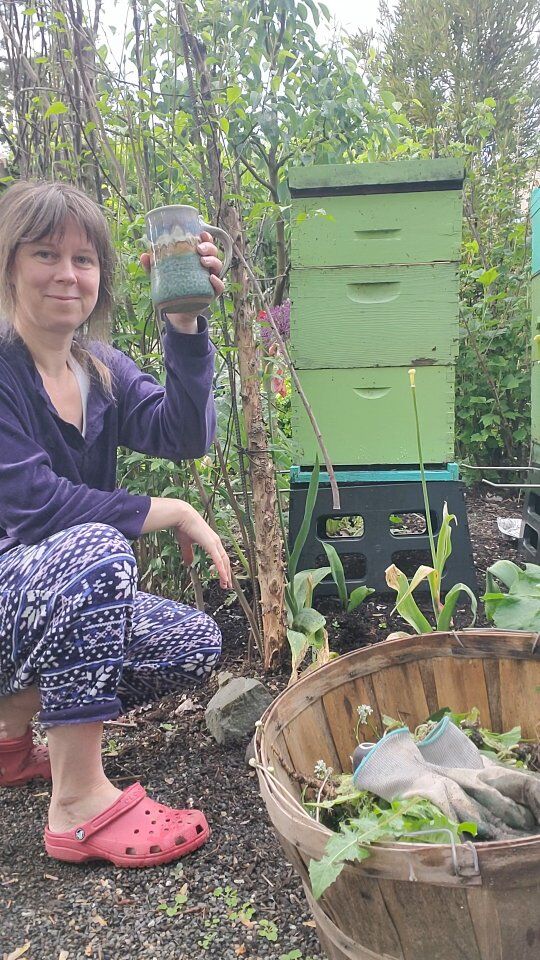

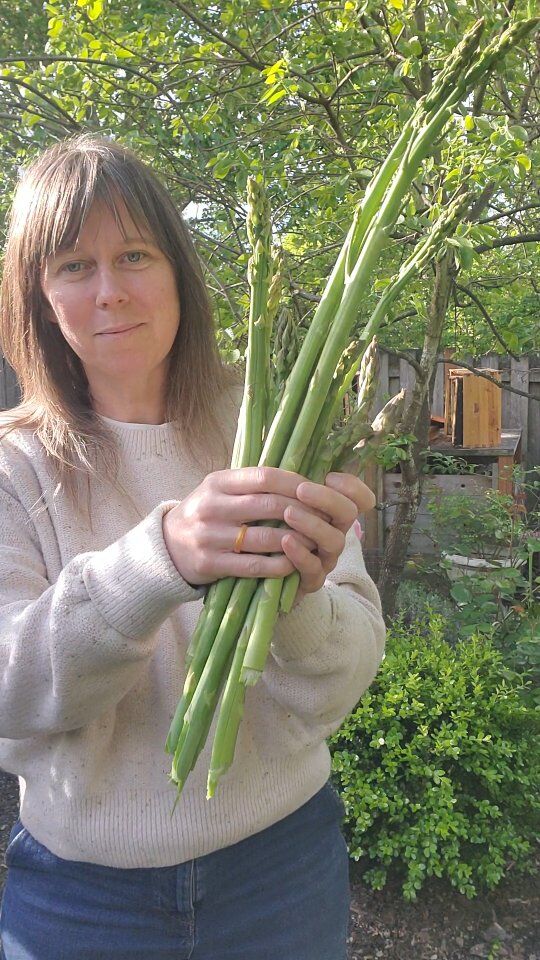
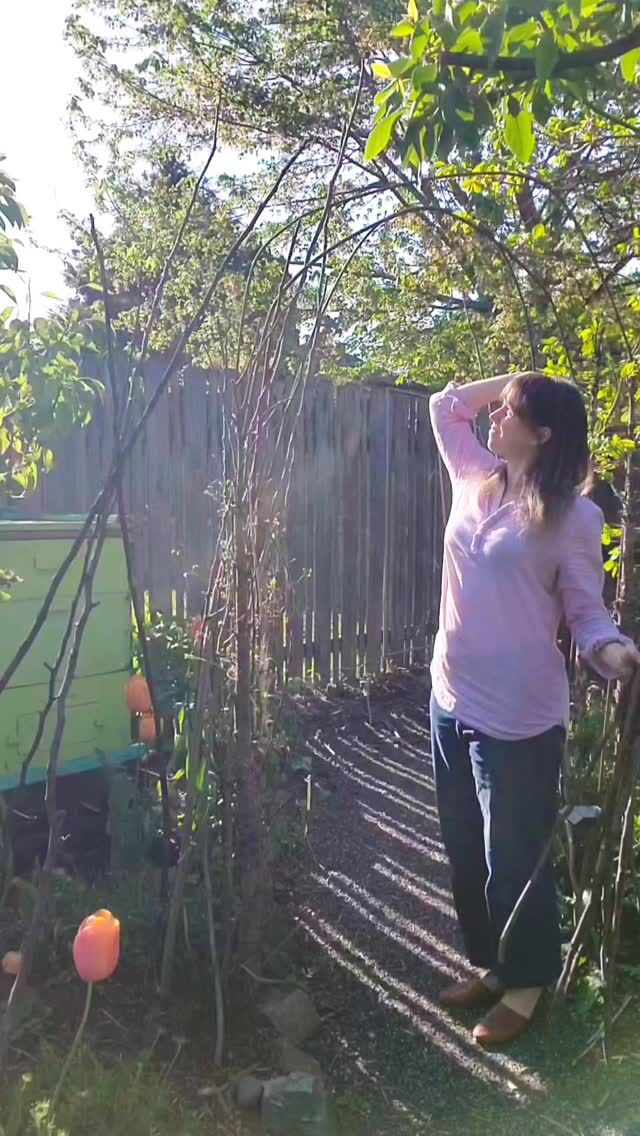
 I start with a
I start with a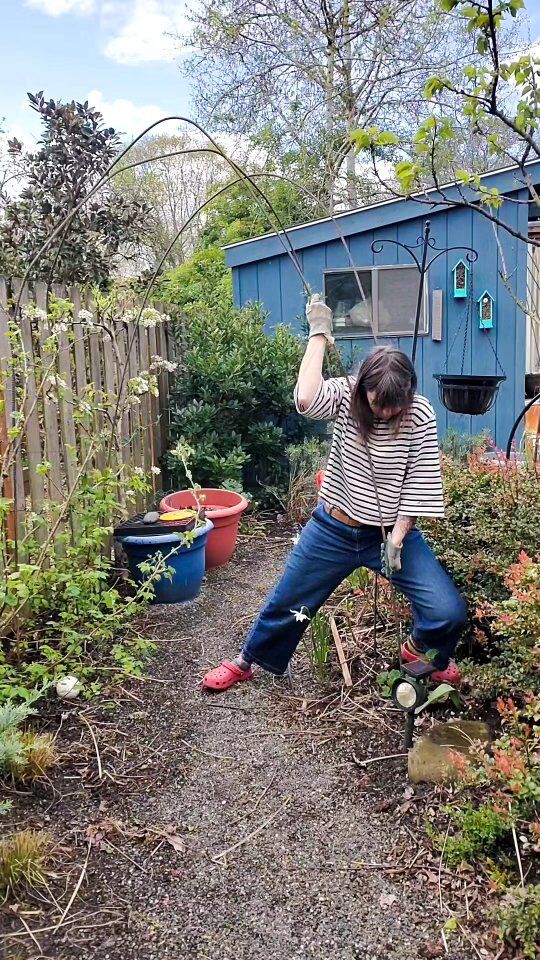
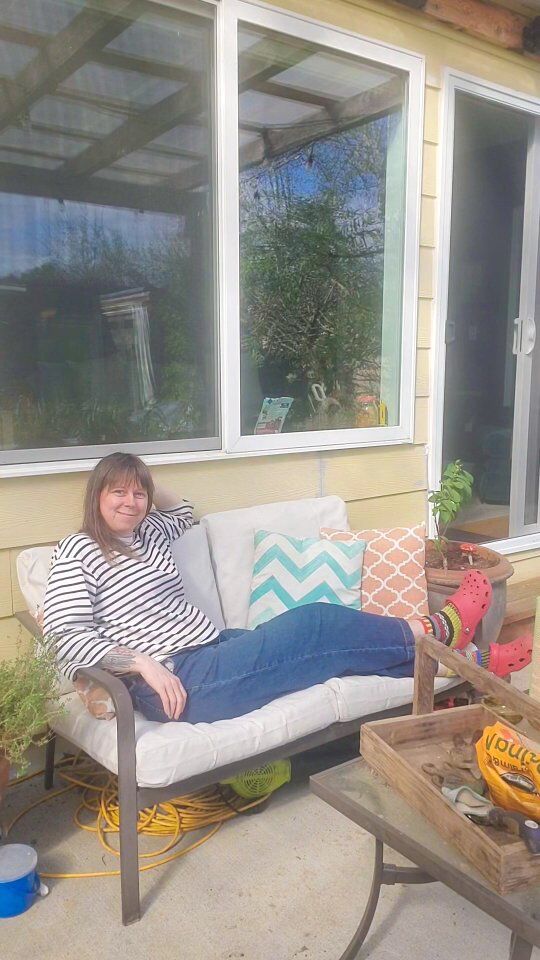
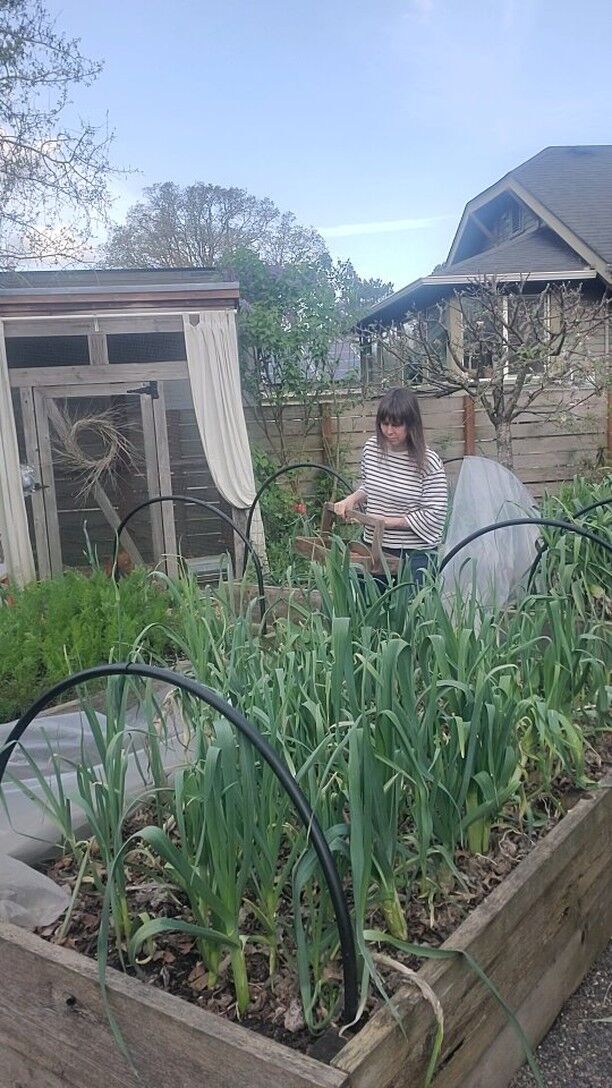
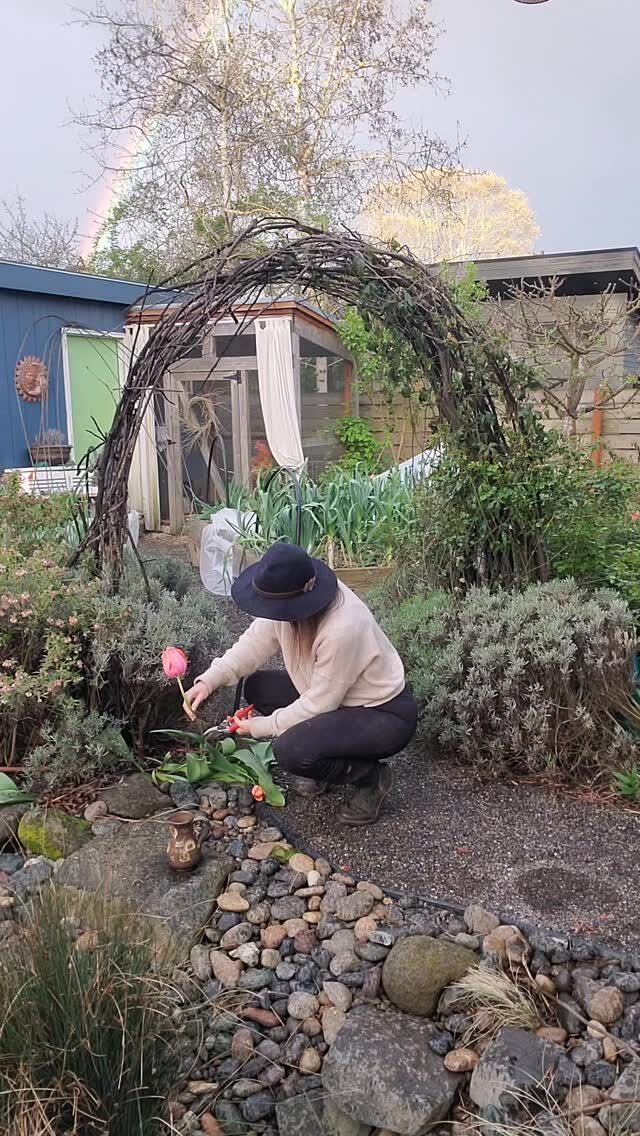
 There's a go
There's a go
This is great, Renee! I’ve never heard of the Strawberry Tree, but it sounds like it would be a pretty great addition to the farm/homestead I’m on right now. We planted strawberry spinach in the spring, which was my introduction to that plant. A Strawberry Tree sounds like it would be another nice perennial/permaculture type addition. Having something produce berries right about now would be quite fantastic.
Do you know if the strawberry tree is safe for chickens?
The fruit is safe for people to eat, so it’s safe for chickens to consume. I haven’t seen anything that says the leaves are toxic to animals, so I would assume they are fine for chickens. Here is a link I found that reported no toxicity: https://www.gardenersworld.com/plants/arbutus-unedo/
What is the best Fertilizer for Irish strawberry tree
I do not fertilize mine, but if I did I would explore Down To Earth’s organic Fruit Tree 6-2-4 fertilizer. I think that would make more sense than a standard tree/shrub fertilizer.
I would like to make mine a multi trunk tree. Would you please guide me as to how to do this? Many thanks
Just carefully pruning over time. Do not prune more than 1/3 off the tree in any one year.